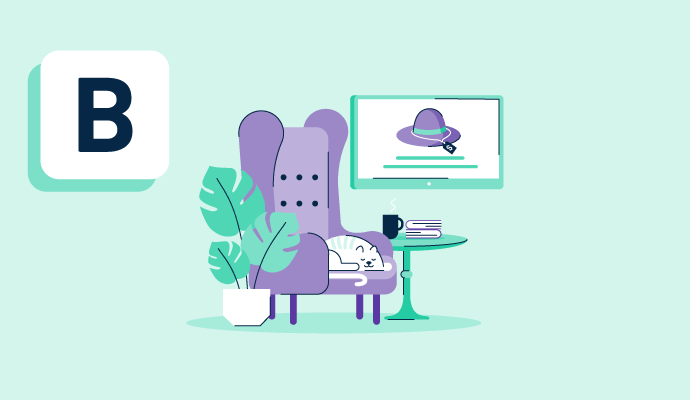What is B2C?
B2C, sometimes referred to as BTOC, is a business model in which a company sells its products or services directly to the consumer for personal use.
While many B2C companies still maintain brick-and-mortar locations, they have become especially popular throughout the e-commerce space. A B2C company is often presented as a contrasting retail model to a business-to-business (B2B) company, which sells products or services from one business to another.
B2C companies with a prolific online presence benefit from several tech tools, including customer relationship management software (CRM) and marketing automation software. A CRM records interactions among a business, its prospects, and its existing customers, while keeping customer data organized in one place.
Types of B2C
Most people are familiar with the traditional way companies sell to consumers: the brick-and-mortar store. However, there are five different types of businesses operating under the B2C umbrella in the e-commerce space:
- Direct sellers: This is the most common type of B2C. In this approach, the retailer lists products or services for sale on a website for customers to purchase directly. Examples of direct sales would be an online clothing boutique or a pet supply company. This category also includes manufacturers who list and sell goods online to bypass an intermediary.
- Online intermediaries: In this case, websites serve as brokers so businesses can sell directly to consumers. Examples include marketplace sites where consumers can buy handmade goods or vintage finds from individuals or small companies.
- Advertising-based: These companies drive visitors to their sites using content marketing, such as blog posts or articles. Then, they sell directly to those audiences using paid ads.
- Community-based: This model is similar to the advertising-based method. However, instead of content, it attracts consumers with an interest-based community. Users then see ads that promote certain products or businesses. Examples include some social network platforms and online communities.
- Fee-based: Sometimes, a customer pays a set amount of money to access content. For example, customers pay a fee to access gated content on a news site or subscribe to listen to music or watch movies through a streaming service.
Benefits of B2C
The business-to-consumer model has several benefits for large and small companies when it comes to marketing and selling their goods and services. Some of these benefits include:
- Large and diverse customer base: When selling to individuals worldwide via e-commerce, there is an ideal customer for almost any product. Now it’s easier than ever for companies to connect with just-right customers, maximizing the potential for growth and revenue.
- Data-driven marketing: Individual consumers provide data points companies can analyze for demographics, product preferences, and more. This data can then be used to drive customized marketing campaigns via email, ads, and social media.
- Lower overhead costs: Many B2C companies operate solely via e-commerce. They save money on rent, heating and cooling, insurance, and other expenses without a physical storefront.
B2C best practices
When starting or expanding a company with a business-to-consumer model, it is vital to follow certain best practices. For example, organizations may want to:
- Nurture the customer relationship. Encourage customers to sign up for a mailing list. Make sure to have a welcome sequence to make the individual feel seen and valued and to let consumers know about special deals and sales.
- Provide optimized website experience. Any delays could cause visitors to leave the site altogether, increasing the bounce rate. Make sure the company’s website is quick to load, the menu is easy to use, and the call-to-action (CTA) buttons are easy to understand. The cart and checkout process should be seamless to increase customer satisfaction and avoid confusion.
- Present detailed product info and photos. If individuals have questions or confusion, they may head to a competitor. Provide detailed information about the product or service, along with clear and relevant photographs.
- Provide phenomenal customer support. Individuals expect high-quality, friendly, and prompt service. Consider using chatbots to answer questions or call-center software to ensure that questions get answered quickly. Enhanced customer support leads to increased retention.
B2C vs. B2B vs. B2B2C
The main difference between the B2C and B2B models is the target audience. B2C companies sell direct-to-consumer, while B2B companies sell to other businesses.
For example, a B2C company might sell shoes directly to a consumer. A B2B company, on the other hand, might sell machinery to companies that manufacture shoes.
B2C businesses have more customers and shorter sales cycles, but the transactions are often at lower price points. Conversely, B2B businesses have fewer clients and longer sales cycles, but individual transactions are worth more.
Some companies follow a hybrid model called business to business to consumer (B2B2C). There are multiple forms of the B2B2C model. The business may sell both to other businesses and directly to consumers. An example would be a software as a service (SaaS) company with subscriptions working for both types of users.
Other companies may sell their products to a business, which then sells them to their customers. For example, a makeup manufacturer might sell their products to a makeup superstore to sell to consumers.

Kelly Fiorini
Kelly Fiorini is a freelance writer for G2. After ten years as a teacher, Kelly now creates content for mostly B2B SaaS clients. In her free time, she’s usually reading, spilling coffee, walking her dogs, and trying to keep her plants alive. Kelly received her Bachelor of Arts in English from the University of Notre Dame and her Master of Arts in Teaching from the University of Louisville.

